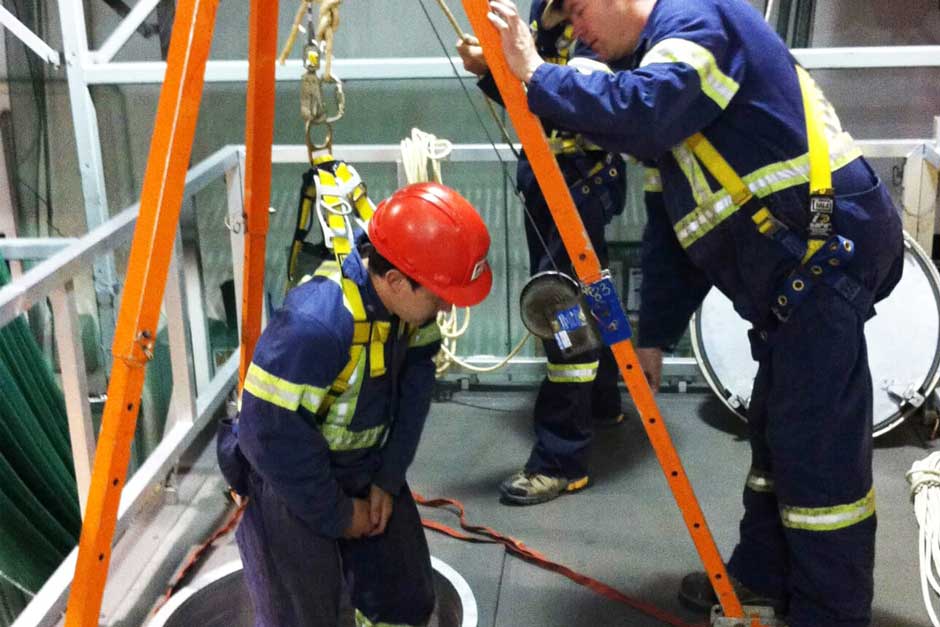Working in confined spaces can be a dangerous job, as there are many hazards that can put workers’ lives at risk. Confined spaces can contain hazardous materials such as gases, vapors, or liquids, and present unique physical risks due to their limited access and confined nature.
Despite the dangers associated with enclosed spaces, the right confined space training in proper safety measures can help minimize the risks and ensure the safety of workers. In this blog post, we will explore the dangers of confined spaces and how training can save lives.
Understanding Confined Spaces
A confined space is any area that is large enough to enter and perform a specific job, but which has limited or restricted means for entry and exit. Examples of confined spaces include storage tanks, vessels, silos, bins, hoppers, vaults, and pits.
Although these spaces are essential for many businesses, they can also pose a great danger to workers due to their enclosed nature and lack of natural ventilation. It is important for employers to be aware of the risks associated with these areas and ensure their workers are properly trained to work safely in them.
The Risks Associated with Confined Spaces
Confined spaces can be dangerous, as they often have limited means of entry and exit, poor ventilation, and potential exposure to hazardous materials. Working in these areas can present a number of hazards, including exposure to toxic gases and inadequate oxygen levels.
The potential for an enclosed area to contain high levels of contaminants such as dust, fumes, or other hazardous substances is also a risk that must be considered. In addition, confined spaces are often small and confined, meaning there may not be enough room to escape if a hazardous situation arises.
This means that workers must be aware of the risks associated with confined spaces and take steps to protect themselves before entering.
OSHA Regulations Regarding Confined Spaces
OSHA has developed several regulations to protect workers from hazardous confined spaces. OSHA requires employers to evaluate each confined space to determine if it is a permit-required confined space (permit-space).
Permit spaces are defined as confined space that contains a hazardous atmosphere or the potential for engulfment, entrapment, or other safety hazards. If a space is classified as a permit space, employers are required to train workers on the proper procedures for entering and exiting the space safely, as well as the specific safety measures necessary to enter and work in a permit space.
Employers must also provide appropriate personal protective equipment (PPE) to workers who enter or work in a permit space, as well as monitor the atmosphere inside the space for any changes in oxygen levels, combustible gases, toxic substances, and other hazards. Additionally, employers must provide rescue personnel with specialized training and equipment to perform rescue operations if someone is trapped in a permitted space.
Finally, employers are required to develop and implement written procedures for entering and exiting permit spaces, as well as provide employees with detailed information about all of the safety hazards associated with working in these spaces.
These procedures should include emergency contact information, safety checklists, and evacuation plans in case of an emergency. By understanding and following these guidelines, employers can ensure that their employees are safe when entering or working in a permit-required confined space.
The Importance of Training
Working in confined spaces poses many risks, including the possibility of oxygen-deficient atmospheres, hazardous vapors, and combustible dust. To ensure the safety of workers in these areas, it is essential that those who enter them receive appropriate training. Training is one of the most effective ways to reduce the risks associated with entering a confined space and can be tailored to individual needs and the specific circumstances of each job.
Training should cover all aspects of confined space entry, such as identifying potential hazards, understanding safe entry procedures, and being aware of the limitations and requirements of protective equipment. It should also include detailed information about rescue and emergency procedures, as well as how to recognize warning signs and respond appropriately.
Proper training is essential for ensuring the safety of workers entering confined spaces. Employers must make sure that their employees are adequately trained before they enter these environments and have a clear understanding of the associated risks.
Additionally, it is important that supervisors and other personnel involved in monitoring confined spaces are well-informed and knowledgeable about the dangers associated with them. With proper training, workers can safely perform their duties while minimizing the risks posed by entering a confined space.
Conclusion
Working in confined spaces can be incredibly dangerous, but with the right confined space training, these risks can be minimized. OSHA regulations provide guidelines for employers on how to keep workers safe while working in confined spaces, and training can help to ensure that all safety protocols are being followed.
Companies should invest in proper training for their employees who work in confined spaces so that they can better understand the risks associated with them and take necessary precautions to avoid injury or illness. Having a comprehensive understanding of the dangers of confined spaces and the necessary safety protocols can make the difference between life and death for workers who enter these hazardous environments.

